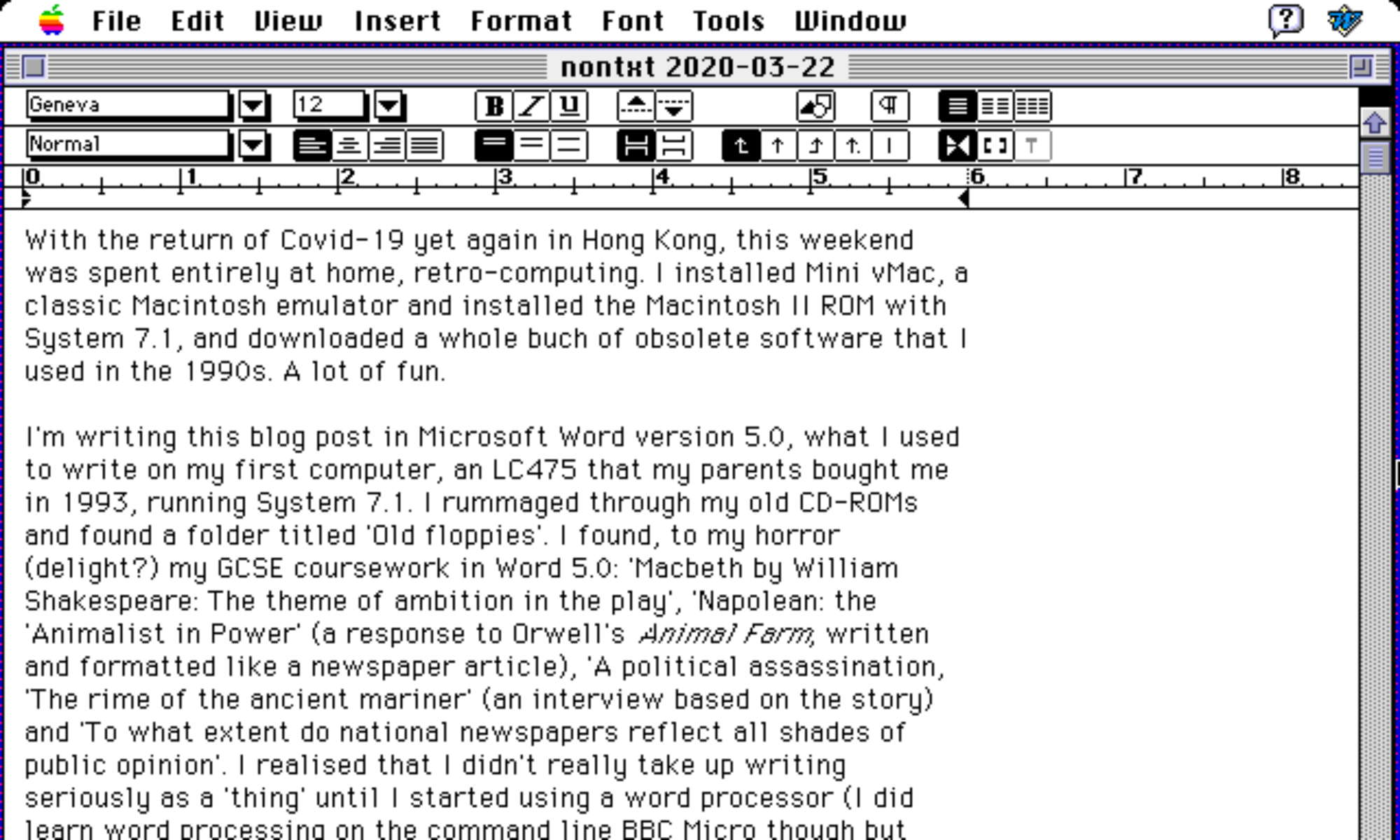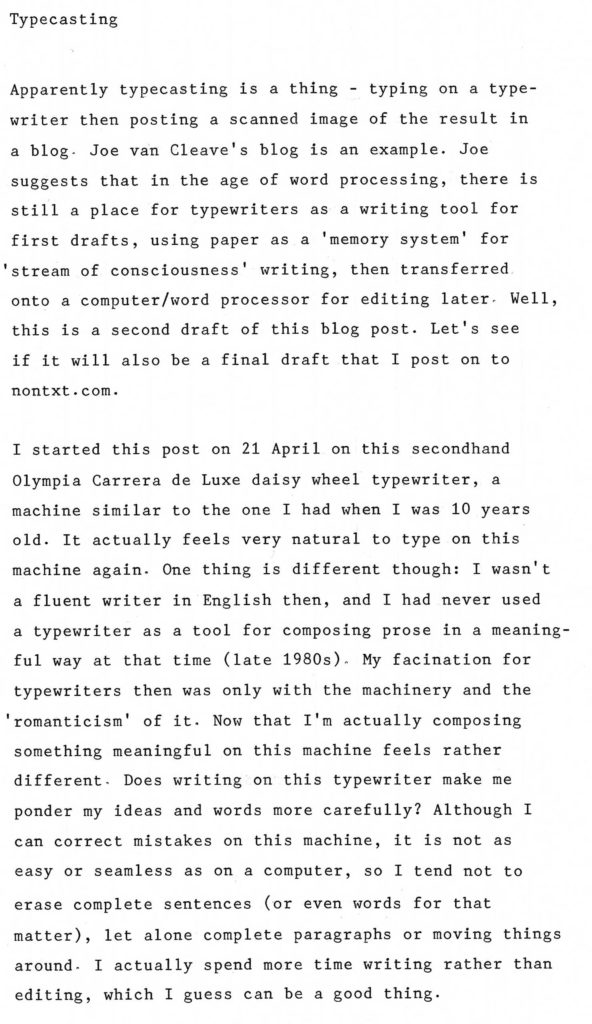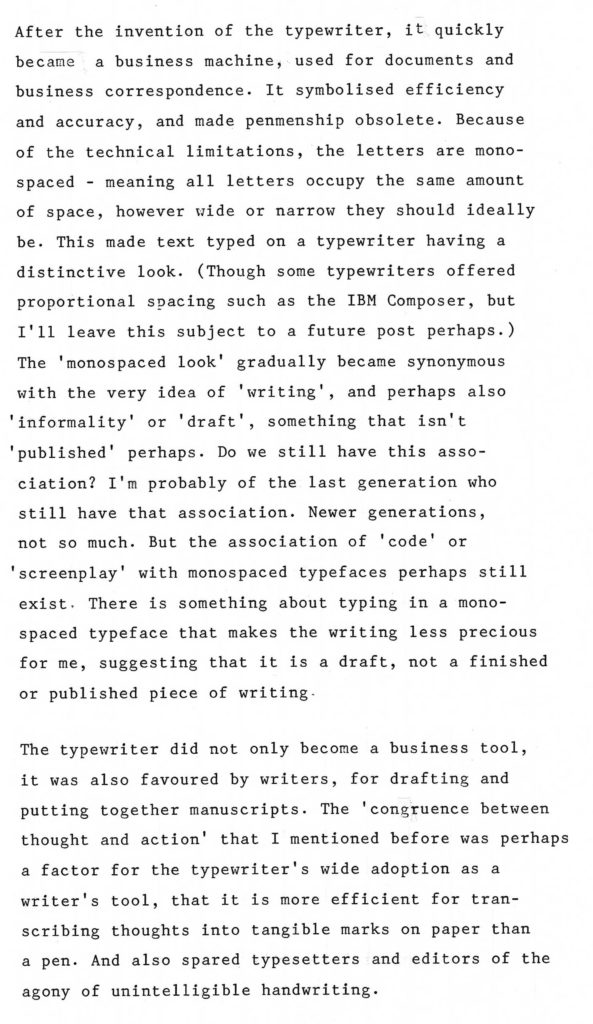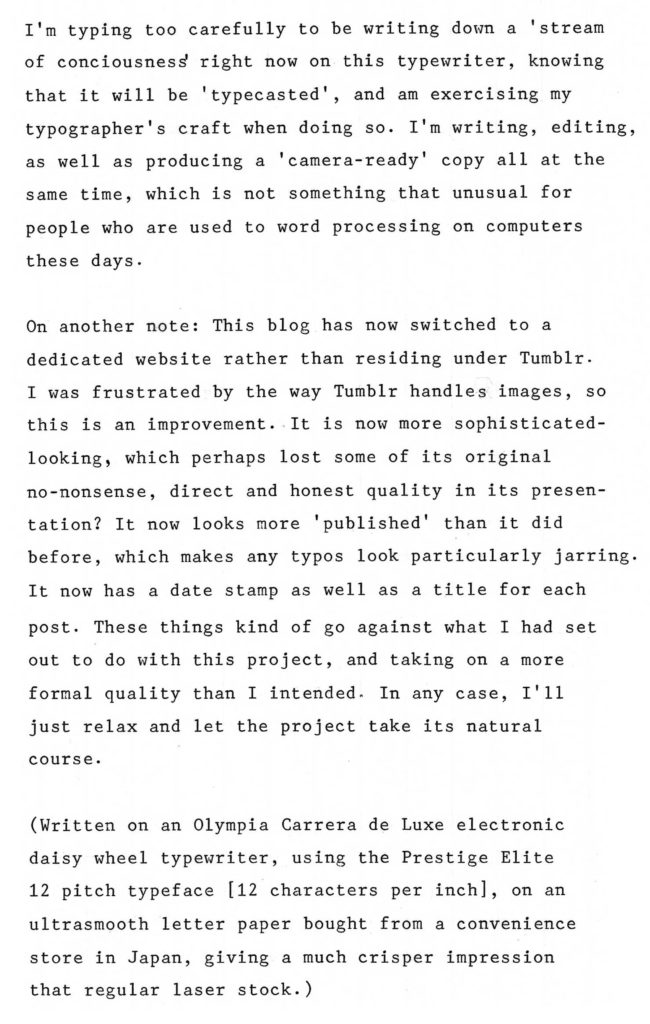Apparently typecasting is a thing – typing on a typewriter then posting a scanned image of the result in a blog. Joe van Cleave’s blog is an example. Joe suggests that in the age of word processing, there is still a place for typewriters as a writing tool for first drafts, using paper as a ‘memory system’ for ‘stream of consciousness’ writing, then transferred onto a computer/word processor for editing later. Well, this is a second draft of this blog post. Let’s see if it will also be a final draft that I post on to nontxt.com.
I started this post on 21 April on this secondhand Olympia Carrera de Luxe daisy wheel typewriter, a machine similar to the one I had when I was 10 years old. It actually feels very natural to type on this machine again. One thing is different though: I wasn’t a fluent writer in English then, and I had never used a typewriter as a tool for composing prose in a meaningful way at that time (late 1980s). My fascination for typewriters then was only with the machinery and the ‘romanticism’ of it. Now that I’m actually composing something meaningful on this machine feels rather different . Does writing on this typewriter make me ponder my ideas and words more carefully? Although I can correct mistakes on this machine, it is not as easy or seamless as on a computer, so I tend not to erase complete sentences (or even words for that matter), let alone complete paragraphs or moving things around. I actually spend more time writing rather than editing, which I guess can be a good thing.
After the invention of the typewriter, it quickly became a business machine, used for documents and business correspondence. It symbolised efficiency and accuracy, and made penmanship obsolete. Because of the technical limitations, the letters are monospaced – meaning all letters occupy the same amount of space, however wide or narrow they should ideally be. This made text typed on a typewriter having a distinctive look. (Though some typewriters offered proportional spacing such as the IBM Composer, but I’ll leave this subject to a future post perhaps.) The ‘monospaced look’ gradually became synonymous with the very idea of ‘writing’, and perhaps also ‘informality’ or ‘draft’, something that isn’t ‘published’ perhaps. Do we still have this association? I’m probably of the last generation who still have that association. Newer generations, not so much. But the association of ‘code’ or ‘screenplay’ with monospaced typefaces perhaps still exist . There is something about typing in a monospaced typeface that makes the writing less precious for me, suggesting that it is a draft, not a finished or published piece of writing.
The typewriter did not only become a business tool, it was also favoured by writers, for drafting and putting together manuscripts. The ‘congruence between thought and action’ that I mentioned before was perhaps a factor for the typewriter’s wide adoption as a writer’s tool, that it is more efficient for transcribing thoughts into tangible marks on paper than a pen. And also spared typesetters and editors of the agony of unintelligible handwriting.
I’m typing too carefully to be writing down a ‘stream of consciousness’ right now on this typewriter, knowing that it will be ‘typecasted’, and am exercising my typographer’s craft when doing so. I’m writing, editing, as well as producing a ‘camera-ready’ copy all at the same time, which is not something that unusual for people who are used to word processing on computers
these days.
On another note: This blog has now switched to a dedicated website rather than residing under Tumblr. I was frustrated by the way Tumblr handles images, so this is an improvement. -It is now more sophisticated-looking, which perhaps lost some of its original no-nonsense, direct and honest quality in its presentation? It now looks more ‘published’ than it did before, which makes any typos look particularly jarring. It now has a date stamp as well as a title for each post. These things kind of go against what I had set out to do with this project, and taking on a more formal quality than I intended . In any case, I’ll just relax and let the project take its natural course.
(Written on an Olympia Carrera de Luxe electronic daisy wheel typewriter, using the Prestige Elite 12 pitch typeface [12 characters per inch], on an ultra-smooth letter paper bought from a convenience store in Japan, giving a much crisper impression than regular laser stock.) [typos have been corrected]




I know exactly what you mean regarding composing for a typecast on the typewriter. For me, the writing isn’t as spontaneous as typing just random thoughts with no intended use at the end. I keep such pieces in a binder as a typewritten journal, though I don’t often journal on a regular basis.
Some of my better type casts start out as handwritten, though not often. In this mode, the typewriter isn’t a creation platform, more like the publishing medium, which I still prefer over word processed.